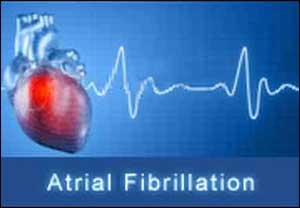- Home
- Editorial
- News
- Practice Guidelines
- Anesthesiology Guidelines
- Cancer Guidelines
- Cardiac Sciences Guidelines
- Critical Care Guidelines
- Dentistry Guidelines
- Dermatology Guidelines
- Diabetes and Endo Guidelines
- Diagnostics Guidelines
- ENT Guidelines
- Featured Practice Guidelines
- Gastroenterology Guidelines
- Geriatrics Guidelines
- Medicine Guidelines
- Nephrology Guidelines
- Neurosciences Guidelines
- Obs and Gynae Guidelines
- Ophthalmology Guidelines
- Orthopaedics Guidelines
- Paediatrics Guidelines
- Psychiatry Guidelines
- Pulmonology Guidelines
- Radiology Guidelines
- Surgery Guidelines
- Urology Guidelines
Magnesium, a safe and inexpensive treatment for atrial fibrillation

Intravenous magnesium sulfate (MgS), when combined with other atrioventricular (AV) nodal blockers, appears to have a synergistic effect in improving rate control of rapid atrial fibrillation (AF) in the emergency department (ED). 4.5 and 9g of MgS had similar efficacy, however, a dose of 9g was associated with more side effects.
These are the findings of a new study published in the journal Academic Emergency Medicine.
- At 4 hours, the therapeutic response rate was higher in low and high MgS groups compared to placebo group, the absolute difference was respectively 20.5% (risk ratio [RR] 2.31; 95% CI 1.45‐3.69) and +15.8% (RR 1.89; 95% CI 1.20‐2.99).
- At 24 hours, compared to placebo group, therapeutic response difference was +14.1% (RR 9.74; 95% CI 2.87‐17.05) with low dose MgS and +10.3% (RR 3.22; 95% CI 1.45‐7.17) with high dose MgS.
- The lowest resolution time was observed in low dose MgS group (5.2±2 hours) compared to 6.1±1.9 hours in High dose MgS group and 8.4±2.5 hours in the placebo group. Rhythm control rate at 24 hours was significantly higher in low dose MgS group (22.9%) compared to High dose MgS group (13.0%, p=0.03) and placebo group (10.7%).
- Adverse effects were minor and significantly more frequent with a high dose of MgS.
"Our findings demonstrate that intravenous MgS appears to have a synergistic effect when combined with other AV nodal blockers resulting in improved rate control of atrial fibrillation. Similar efficacy was observed with a low dose (4.5 and 9g) of MgS but a high dose of 9g was associated with more side effects," concluded the authors.
For more information log on to https://doi.org/10.1111/acem.13522

Disclaimer: This site is primarily intended for healthcare professionals. Any content/information on this website does not replace the advice of medical and/or health professionals and should not be construed as medical/diagnostic advice/endorsement or prescription. Use of this site is subject to our terms of use, privacy policy, advertisement policy. © 2020 Minerva Medical Treatment Pvt Ltd